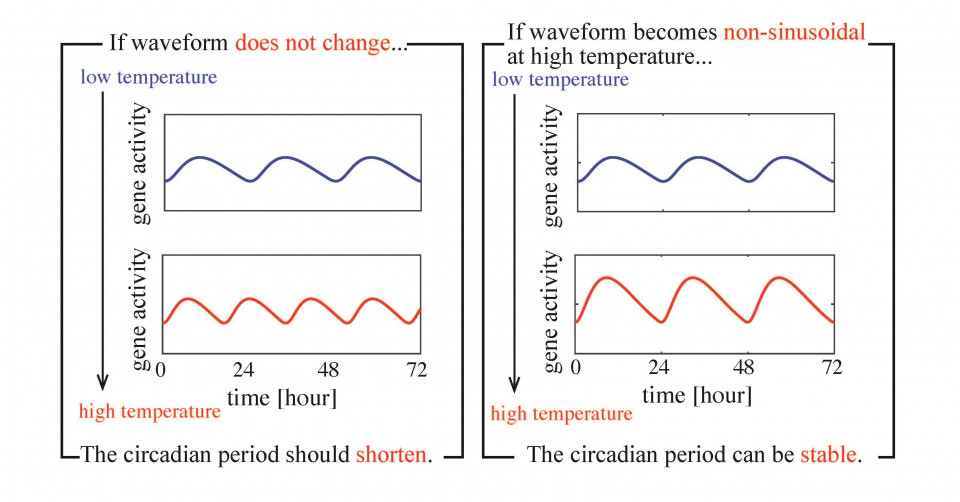Paper: Non-sinusoidal Waveform in Temperature-Compensated Circadian Oscillations
We have autonomous daily rhythm in our body, so-called “circadian clock” for which we can wake up without alarm clock. The rhythm governs the timing of physiological events such as hormone secretion. Curiously, the period of our daily rhythms is stable to temperature, a phenomenon known as “temperature compensation.” Temperature compensation has been a mystery for many years because underlying reaction processes tend to accelerate with temperature. If our internal clock was sensitive to temperature, the clock would not function properly any more.
To uncover the mystery, we developed a simpler model of circadian clock based on experimental evidences whilst many realistic simulators have been proposed. Using the model, we derived the period formula. The formula states that “the more non-sinusoidal, the longer period.” From the formula, we predicted that more non-sinusoidal waveform at higher temperature should be observed in reality which is necessary to cancel out the period shortening effect at higher temperature. Unexpectedly, we obtained a similar period formula for a limit cycle oscillation of electrical circuit (van der Pol model), indicating that non-sinusoidal waveform lengthens period. How can circadian clock and electrical circuit behave similarly? We wish to understand the reason in a future.
- Reference
- Shingo Gibo, Gen Kurosawa
"Non-sinusoidal Waveform in Temperature-Compensated Circadian Oscillations"
Journal Reference: Biophysical Journal 116 , 741–751 (2019)
doi: 10.1016/j.bpj.2018.12.022



